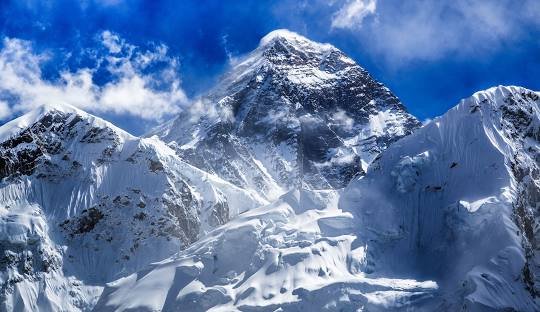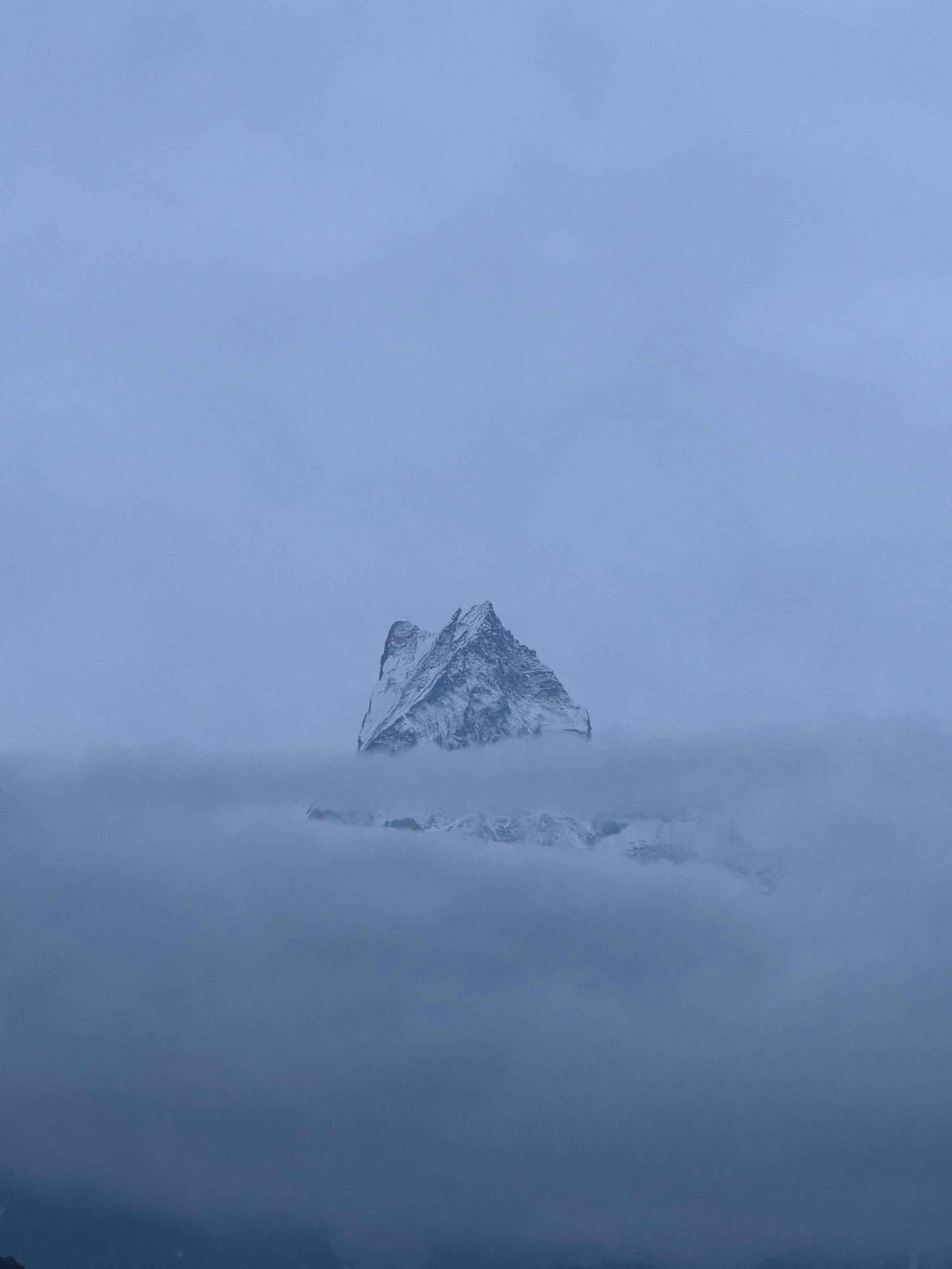
Glacier Climbing in Nepal
Nepal is one of the world’s most extraordinary destinations for high-altitude adventure. With eight of the world’s fourteen highest mountains and hundreds of magnificent glaciers spread across the great Himalayas, the country offers an unmatched environment for extreme climbing. Among all the thrilling experiences the region provides, glacier climbing in Nepal has become a bucket-list activity for mountaineers, trekkers, and adventure travelers who want to push beyond normal trekking trails.
Unlike general hiking or trekking, glacier climbing takes you into icy landscapes filled with crevasses, seracs, icefalls, and towering frozen walls. It offers a rare chance to experience the raw, untouched, and ever-changing beauty of the high Himalayas up close. Whether you are a beginner interested in a non-technical peak climb like Yala Peak or Mera Peak, or a more experienced climber taking on Island Peak or Lobuche East, glacier climbing in Nepal guarantees an unforgettable adventure.
This complete guide covers everything you need to know routes, regions, required skills, training, permits, safety, seasons, and the best peaks for glacier climbing in Nepal.
What Makes Glacier Climbing in Nepal So Special?
There are very few places in the world where climbers can explore glaciers at such massive scale and elevation. Here is why Nepal is considered the best destination globally for glacier climbing:
1. Home to the Tallest and Most Impressive Glaciers
Nepal hosts some of the world’s biggest and most iconic glaciers, including:
Khumbu Glacier
Imja Glacier
Ngozumpa Glacier (longest glacier in Nepal)
Lhotse Glacier
Langtang Glacier
Dhaulagiri Glacier
Annapurna Glacier
Each of these glacier systems provides unique climbing terrain, from gentle slopes to steep ice walls and crevasse-dense zones. Climbers get to experience the living nature of glaciers their movement, cracking, melting, and transformation.
2. Suitable for All Skill Levels
One of the biggest strengths of glacier climbing in Nepal is that both beginners and experts can participate.
For beginners: Nepal offers trekking peaks like Yala Peak, Tent Peak, and Mera Peak with less-technical glacier routes.
For intermediate climbers: Island Peak and Lobuche East include steep ice walls and ladder crossings.
For advanced climbers: Khumbu Icefall and technical 7000m+ peaks offer extreme glacier challenges.
This diversity makes Nepal unique compared to many other glacier-climbing destinations.
3. Perfect Training Ground for Big Expeditions
Climbers aiming for major expeditions like Everest, Lhotse, K2, or Manaslu often use glacier climbing in Nepal for preparation. It builds high-altitude endurance, technical skills, and glacier awareness.
4. Breathtaking Himalayan Landscapes
Glacier climbing in Nepal is not just about ice and snow it’s about breathtaking panoramas that include:
Towers of ice and snow
Crystal-blue crevasse walls
Hanging glaciers
Frozen summits glowing in sunrise
Giant seracs rising above glacier fields
No other region in the world offers such dramatic, photographic climbing terrain.
Regions Known for Glacier Climbing in Nepal
Nepal’s Himalayan regions each offer a unique environment for glacier climbing. Here are the top destinations that attract climbers from around the world:

Everest
1. Everest (Khumbu) Region — The Heart of Glacier Adventure
The Everest region is the most famous region for glacier climbing in Nepal. It offers:
Khumbu Glacier
Imja Glacier
Ngozumpa Glacier
Lhotse Glacier
Climbers heading to Everest Base Camp, Island Peak, Lobuche East, and Cho Oyu experience these glacier systems. The Khumbu Icefall is considered one of the most technical and dangerous glacier routes on Earth. While it’s only for advanced climbers, the region also offers moderate glacier trails for beginners.
Popular glacier climbs in Everest Region
Island Peak
Lobuche East
Pokalde Peak
Cho Oyu (advanced)
2. Annapurna & Dhaulagiri Region — A Mix of Technical and Non-technical Glaciers
The Annapurna region offers a rich combination of icefalls, glacier basins, and high Himalayan walls.
Main glaciers include:
Annapurna Glacier
Gangapurna Glacier
Tilicho Glacier
Dhaulagiri Glacier
Trekking peaks like Tent Peak, Tharpu Chuli, Pisang Peak, and Chulu West require glacier crossings, making this region ideal for intermediate climbers.
3. Langtang Region — Best for Beginners
If you’re looking for an introductory glacier climbing experience, Langtang is the perfect region.
Main glaciers:
Langtang Glacier
Yala Glacier
Lirung Glacier
Popular glacier climbing peak:
Yala Peak (5,520m) perfect for first-time glacier climbers.
This region is close to Kathmandu and offers easier access compared to Everest or Annapurna.
4. Makalu & Barun Region — Remote and Untouched
This region is remote, wild, and home to some of Nepal’s most pristine glacier formations.
Popular for:
Makalu Base Camp Glacier
Sherpani Col Glacier
Amphu Lapcha Pass Glacier
These glacier routes are technical and ideal for highly experienced climbers.
5. Manaslu Region — Challenging Icefalls & Deep Crevasses
The Manaslu region features:
Manaslu Glacier
Pungen Glacier
Birendra Lake glacier walls
Climbers to Manaslu Base Camp experience a mix of moraine trails, ice crossings, and crevasse fields. This region offers an authentic Himalayan glacier journey.
Best Peaks for Glacier Climbing in Nepal
Here’s a breakdown of the most popular glacier climbs:

1. Mera Peak (6,476m)
Considered one of the best beginner-friendly peaks involving extensive glacier travel.
Highlights:
Long glacier walk across Mera Glacier
High-altitude climbing experience
Stunning summit views of Everest, Lhotse, and Makalu
2. Island Peak (Imja Tse)
A more technical climb with:
Steep ice wall
Ladder crevasse crossings
Glacier traverses
Perfect for climbers with some experience.
3. Lobuche East
More advanced than Island Peak, featuring:
Sharp glacier ridges
Mixed terrain (ice + snow)
Technical summit ridge
4. Yala Peak
Best for first-timers.
Features:
Easy glacier slopes
Short trekking duration
Introductory crampon and ice-axe use
5. Chulu Far East / Chulu West
Ideal for intermediate climbers wanting:
Long glacier basins
Steep icy ascents
Remote alpine climbing
Skills Required for Glacier Climbing in Nepal
Even if you are climbing an easier peak like Mera or Yala, knowing basic glacier travel skills is essential:
1. Proper use of crampons
Learn to walk on ice without slipping, using toe-front and side-step techniques.
2. Ice Axe Handling
Used for balance, anchoring, and self-arrest (stopping yourself if you fall).
3. Roped Travel
Crucial for safety while crossing glaciers with hidden crevasses.
4. Fixed Rope Techniques
Includes ascending/descending with:
Jumar
Descenders
Carabiners
Safety knots
5. Crevasse Rescue Knowledge
Even basic understanding helps keep the team safe.
6. High-Altitude Climbing Skills
Climbers must understand:
Acclimatization
Oxygen management
Hydration
Pacing
Most guided groups include pre-climb training days.
Essential Equipment for Glacier Climbing
Here is a list of mandatory gear used during glacier climbing in Nepal:
Climbing Gear
Crampons
Ice axe
Climbing harness
Carabiners
Ascenders & descenders
Helmet
12-point crampon compatible boots
Ropes (provided by guides)
Clothing
Base layers
Thermal fleece
Down jacket
Waterproof shell
Expedition gloves
Gaiters
Safety Equipment
Headlamp
Avalanche awareness kit (for advanced regions)
Glacier goggles
First-aid kit
Most equipment can be rented in Kathmandu or Pokhara.
Best Time for Glacier Climbing in Nepal
There are two prime seasons:
1. Spring (March to May)
Stable weather
Warm days
Excellent snow consistency
Best visibility
2. Autumn (September to November)
Clear skies
Dry glacier surfaces
Ideal for photography and technical climbs
Off-Season Considerations
Winter: Extremely cold, icy winds, high avalanche risk
Monsoon: Heavy snow and unstable ice
Most glacier climbing in Nepal happens during spring and autumn for safety.
Permits Required for Glacier Climbing
Depending on the region and peak, you may need:
NMA Climbing Permit
National Park Permit (e.g., Sagarmatha, Annapurna)
Local Municipality Permit
TIMS Card (in some regions)
Your trekking agency typically manages all these permits.
Safety Tips for Glacier Climbing in Nepal
The Himalayan environment is harsh and unpredictable. Follow these essential safety guidelines:
Always climb with certified guides
Glacier terrain is dangerous without trained professionals.
Acclimatize properly
High altitude can cause AMS, HACE, and HAPE.
Start early
Early morning frost keeps glaciers firm and safe.
Stay roped during glacier crossings
This is mandatory in areas with hidden crevasses.
Avoid walking near seracs
Seracs can collapse without warning.
Prepare for rapid weather changes
Conditions in the Himalayas can shift dramatically.
Hydrate and fuel your body
Altitude and cold temperatures dehydrate climbers faster.
Why Glacier Climbing in Nepal Is Growing in Popularity
In recent years, glacier climbing in Nepal has attracted more climbers than ever before. Some reasons include:
1. Increased access to trekking peaks
Nepal’s NMA has promoted numerous peaks with safer glacier routes for travelers who want extra adventure beyond trekking.
2. Better guiding standards
Training and certification have improved dramatically, making glacier climbing safer and more accessible.
3. Adventure tourism boom
Thrill-seekers want higher, colder, and more challenging experiences.
4. Social media influence
Glacier landscapes are highly photogenic — crevasses, blue ice walls, and sunrise summit shots attract climbers from worldwide.
5. More affordable than other countries
Compared to Europe or North America, glacier climbing in Nepal is far more affordable.
Who Can Join Glacier Climbing in Nepal?
Beginners
Can climb: Yala Peak, Mera Peak, Tent Peak
Require basic fitness
Training provided
Intermediate Climbers
Can climb: Island Peak, Lobuche East, Chulu Far East
Require knowledge of ropes, crampons, and altitude
Advanced Climbers
Can climb: Sherpani Col, Amphu Lapcha, Khumbu Icefall
Require professional experience
There are glacier climbing options for every level.
Is Glacier Climbing in Nepal Safe?
Yes if done with proper guides, acclimatization, and equipment. However, glaciers include natural hazards like:
Crevasses
Icefall movement
Falling seracs
Hidden snow bridges
Extreme cold
Altitude sickness
Choosing a reputable climbing company dramatically increases safety.
Glacier climbing in Nepal is one of the most thrilling and rewarding high-altitude adventures you can experience. It combines technical ice skills, breathtaking Himalayan landscapes, and exhilarating summit climbs. Whether you’re a first-time climber aiming for Mera Peak or a seasoned mountaineer targeting advanced icy passes, Nepal offers glacier routes that match every skill level.
With proper training, certified guides, and the right preparation, glacier climbing in Nepal becomes not only safe and achievable but also life-changing. The frozen beauty, crisp mountain air, and powerful sense of achievement stay with you forever.
FAQs
1. Is glacier climbing in Nepal suitable for beginners?
Yes, Nepal has beginner-friendly glacier climbs like Mera Peak, Yala Peak, and Tent Peak. These routes include basic glacier walking and simple ice climbing techniques.
2. What is the best season for glacier climbing in Nepal?
The best seasons are Spring (March–May) and Autumn (September–November). Weather is stable, visibility is clear, and glacier conditions are ideal.
3. What gear is needed for glacier climbing in Nepal?
Essential gear includes crampons, ice axe, harness, ropes, helmet, glacier boots, down jacket, and warm layers. Most equipment can be rented in Kathmandu.
4. Are permits required for glacier climbing?
Yes. Climbers typically need a climbing permit, national park entry permit, and sometimes a local permit or TIMS card depending on the region.
5. Do I need prior mountaineering experience?
For beginner peaks like Mera or Yala, prior experience isn’t required. However, technical climbs like Island Peak or Lobuche East require some mountaineering skills.
6. How dangerous is glacier climbing in Nepal?
It comes with risks such as crevasses, falling ice, and weather changes. With certified guides, proper rope systems, and acclimatization, the activity is considered safe.
7. How long does a glacier climbing expedition last?
Most climbs range from 10 to 20 days, depending on the peak and acclimatization schedule. Advanced climbs may take longer.
8. Can I rent climbing equipment in Nepal?
Yes. Kathmandu and Pokhara have several rental shops offering boots, crampons, helmets, axes, and technical gear.
9. Which glacier climbing peak is best for first-timers?
Yala Peak (5,520m) and Mera Peak (6,476m) are the best options for beginners due to easier slopes and minimal technical sections.
10. Why is glacier climbing in Nepal popular?
Because Nepal offers dramatic glacier landscapes, affordable climbing packages, beginner-friendly peaks, experienced guides, and training opportunities for bigger expeditions.

